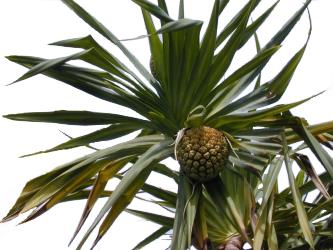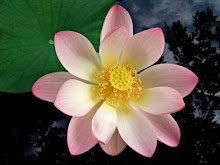The pandan tree grows as tall as 5 meters, with erect, small branches. Pandan is also known as Fragrant Screw Pine. Its trunk bears plenty of prop roots. Its leaves spirals the branches, and crowds at the end. Its male inflorescence emits a fragrant smell, and grows in length for up to 0.5 meters. The fruit of the pandan tree, which is usually about 20 centimeters long, are angular in shape, narrow in the end and the apex is truncate. It grows in the thickets lining the seashores of most places in the Philippines. In various parts of the world, the uses of this plant are very diverse. Some countries concentrate on the culinary uses of pandan, while others deeply rely on its medicinal values. For instance, many Asians regard this food as famine food. Others however mainly associate pandan with the flavoring and nice smell that it secretes.
In the Philippines, pandan leaves are being cooked along with rice to incorporate the flavor and smell to it. As can be observed, the uses of the pandan tree are not limited to cooking uses. Its leaves and roots are found to have medicinal benefits. Such parts of the plant have been found to have essential oils, tannin, alkaloids and glycosides, which are the reasons for the effective treatment of various health concerns. It functions as a pain reliever, mostly for headaches and pain caused by arthritis, and even hangover. It can also be used as antiseptic and anti-bacterial, which makes it ideal for healing wounds. In the same manner, a preparation derived from the bark of this plant may be used to address skin problems. Many people have also discovered that it is an effective remedy for cough. In India, pandan leaves are being used to treat skin disorders like leprosy and smallpox. The bitter tasting quality of the leaves makes it ideal for health problems which include, but are not limited to, diabetes fever, ulcer and wounds. In Hawaii, pandan flowers are being chewed by mothers who later give the chewed flowers to their children, as laxative. The juice extracted from pounded roots of this tree is used and mixed with other ingredients to ease chest pains. Also, it is used as tonic for women who have just given birth and who are still in weak states. Pandan flowers have also been traced with characteristics that function as aphrodisiac. Pandan also manifests anti-cancer activities, and that is why modern researches in the United States have subjected this plant for further experiments and investigation. |
Pandan Health Benefits: • Treats leprosy, smallpox and wounds.
• Helps reduce fever
• Solves several skin problems
• Relives headache and arthritis
• Treatment for ear pains
• Functions as a laxative for children
• Eases chest pains
• Helps in speeding up the recuperation of women who have just given birth and are still weak
• Pandan reduces stomach spasms and strengthens the gum. | Preparation & Use of Pandan: • Decoction of the bark may be taken as tea, or mixed with water that is to be used in bathing, in order to remedy skin problems, cough, and urine-related concerns.
• Apply pulverized roots of pandan to affected wound areas to facilitate healing.
• The anthers of the male flowers are used for earaches, headaches and stomach spasms.
• Chew the roots to strengthen the gum.
• Extract oils and juices from the roots and flowers are used in preparing the decoction to relieve pains brought about by headache and arthritis. |


Tidak ada komentar:
Posting Komentar